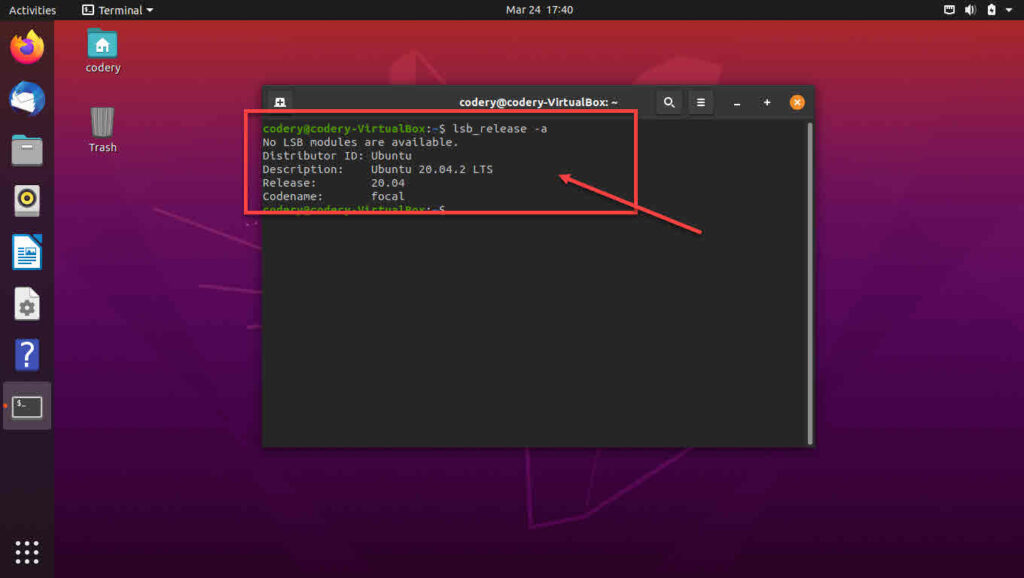However, the downside of having so many options is that you may not even know which version of Linux you are using. In this article, we’ll look at a few ways to find out which version of Ubuntu you’re using.
Also read : How to enable SSH on Ubuntu?
There are many commands you can use to get various information about the Ubuntu installation.
Using lsb_release
The lsb_release command shows you information from the Linux Standard Base, also known as LSB, about the distribution currently running.
lsb_release -a
The result would look like this.
You can change -a to -d to print only the version of the distribution you are using.
lsb_release -d
Using the /etc/issue file
For most Linux distributions, the problem file in the /etc directory contains the system identification text. You can use the cat command to view this file.
cat /etc/issue
The result would look like this.
Using the /etc/os-release file
As the name suggests, the os-release file contains important operating system identification data for your distribution.
cat /etc/os-release
Note that this command only works on Ubuntu 16.04 or later.
Using the Hostnamectl command
You can use the hostnamectl command to change the hostname, but you can also use it to get important information about the distribution. This command also only works on Ubuntu 16.04 or later.
hostnamectl
Also read : How to install themes in Ubuntu?
The neofetch command-line utility prints all relevant system information about your distribution, including the desktop environment, directly to your terminal with a single command.
Step one: Install neofetch with the following command.
sudo apt install neofetch
Step two: After installation, type neofetch into the terminal and press Enter.
Also read : The 11 best Ubuntu themes
Since Ubuntu 18.04, GNOME is the default desktop environment, as opposed to earlier versions that used Unity by default.
Just follow these instructions to get the details of your distribution.
Step one: Open the System Preferences dialog box by clicking the Preferences icon in the upper right corner. Click on the settings icon to continue.
Step two: Click on Info and you will get all the information you need.
Also read : How do I install the Unifi controller on Ubuntu?
The one who writes/cuts/films/owns all the technology, and when he’s not around, switches to virtual machine races. You can contact Yadullah at [email protected], or follow him on Instagram or Twitter.
frequently asked questions
What is the current version of Ubuntu?
The latest LTS version of Ubuntu is Ubuntu 20.04 LTS Focal Fossa, which was released on the 23rd. April 2020 has been released. Canonical releases new stable versions of Ubuntu every six months and new long-term support versions every two years. The latest non-LTS version of Ubuntu is Ubuntu 20.10 Rough Gorilla.
How do I find the Linux version?
The command uname -r indicates the version of the Linux kernel currently in use. You can now see which Linux kernel you are using. In the above example, the Linux kernel is 5.4.
What is the command to check the version?
Winver is a command that displays the active Windows version, build number and installed service packs: Press Start – RUN, type winver and press Enter. If RUN is not available, the computer is running on Windows 7 or higher.
Related Tags:
check ubuntu version 32 or 64,latest ubuntu version,check ubuntu version bash,how to update ubuntu version,current ubuntu version,bash script check ubuntu version,Feedback,Privacy settings,How Search works,how to check ubuntu version in windows 10,determine wsl version




















































































































